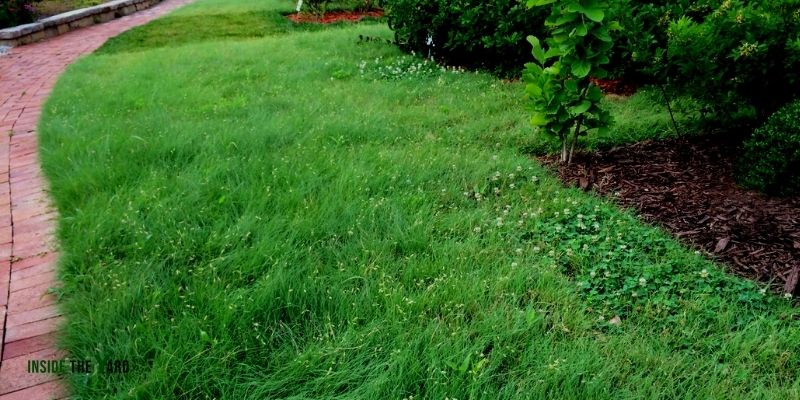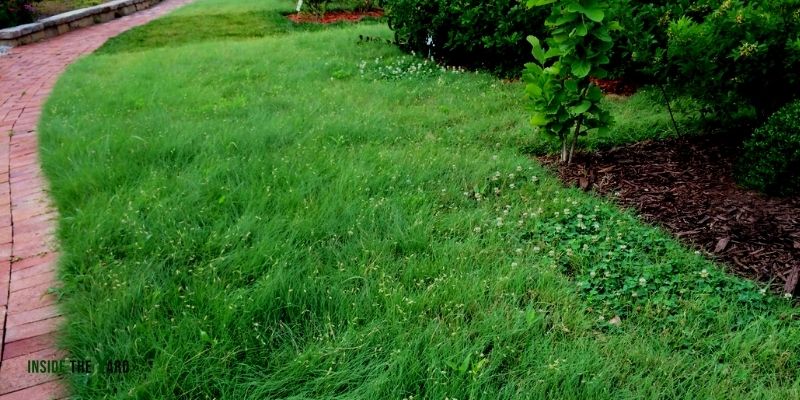
What are the buffalo grass pros and cons? The most attractive advantage of this grass is the live-green color that decorates your lawn. If you can maintain these grasses correctly, you can better use them to create extra beauty in your lawn. But there are some drawbacks, as well.
To use them for your benefit, you must know the detailed advantages and disadvantages of buffalo grass. So, let’s learn the merits and demerits of buffalo grass to use their merits properly.
Buffalo Grass Pros and Cons
Buffalo grasses are dark green and can stand well in different weather conditions. As these grasses are drought and heat resistant, they can tolerate cold weather too. So, it is essential to know their advantages.
Pros of Buffalo Grass
Drought resistance: Buffalo grass can stay alive in heavy drought conditions. When these grasses cannot find moisture or water, they go into a dormant state and survive until the water is available. When it finds water after a long-term drought condition, it immediately consumes sufficient moisture and then revives soon.
Low height
Long grasses destroy lawn beauty and consume more nutrients than harm other plants on the lawn. Buffalo grasses can have a maximum height of 8 inches only. These grasses grow from 3 inches to 8 inches in height, depending on the variety.
Low nutrients requirement
As buffalo grasses are shorter comparatively, they also need low nutrients. The nitrogen requirement per the year of 1000 square feet of mature buffalo grass is only 1 to 2 pounds. So, it reduces the maintenance cost to a great extent.
Low insect attack
There are very few insects that attack buffalo grasses. One known insect is the chinch bug that bothers buffalo grass.
Tolerant to weather conditions
Buffalo grasses are known to be tolerant to heat. So, in hot summer, it can grow well. Moreover, these grasses are also tolerant of cold weather. They do not get affected by high winds too.
Lively Green Color in Late-Season
Buffalo grasses stay lively green even at the late season of their growth. That is why these grasses look beautiful all around the year.
Cons of Buffalo Grass
Though the buffalo grass cons do not impact much when users intend to use it for their landscaping, you can have a glance.
Expensive
Though the maintenance cost is low, buffalo grass seed and sod are costly compared to other grass or turf types. So, the initial price is relatively high, and you have to keep that in mind while growing buffalo grasses.
Prefer dry climate
Buffalo grasses tolerate dry, hot, and cold temperatures. But buffalo grasses strongly prefer and grow well in drier climates. As the grass’s origin is great plains states and this area is dry, buffalo grasses grow better in dry areas and hot seasons.
Short growing time in northern areas
The primary range of the growth of buffalo grasses is the western states in West Texas to California in Wester Canadian Province. There are many varieties of buffalo grasses, and most of them cannot grow well in high rainfall areas.
You see, northern areas are pretty cold. Though buffalo grasses can stay green in southern regions of the late season, it becomes brown in cold northern regions. It is because it remains dormant when there is heavy cold. Some buffalo grasses varieties do not grow well in the north. These varieties are also not adapted to cold and do not go dormant.
Less dense varieties
The older varieties of buffalo grasses are prone to grow in less density than new varieties. Though there are seen lots of seed heads, it grows in thin thickness that becomes unattractive to people.
Thin
Buffalo grasses are not thick enough like other turf-type grasses. Compared to other grasses like Zoysia, buffalo grasses are pretty narrow, which seems less decorative.
Advice to Choose Buffalo Grass
As there are many varieties of buffalo grasses, you should look for those which can grow in thicker density in your lawn.
If you have a lawn in the northern plains, you will get better benefits from buffalo grasses. You can get help from the country extension office to choose the best grass for your location.
Frequently Asked Questions (FAQs)
Does buffalo grass make a good lawn?
Yes, buffalo grasses can make a beautiful lawn by their lively green color and short-length style. As these grasses need less maintenance cost, fewer nutrient requirements, and resistance to heat, drought, and cold, buffalo grasses work well in decorating lawn.
What are the benefits of buffalo grass?
Buffalo grasses are beneficial in several facts. These grasses can stay beautiful dark green if planted in the northern region. They are resistant to drought, hot and cold seasons. Even if there is a cold, they go under dormant conditions and stay alive.
Does buffalo grass spread quickly?
The older varieties of buffalo grasses can grow relatively slowly, but the newer varieties grow faster in the spring season especially. These varieties also stay dark green in the fall season. They grow and spread quickly by the stolons and cover the area.
Conclusion
Buffalo grasses can be great decorative lawn grasses if you can choose wisely. So, you have to know and understand the buffalo grass pros and cons. According to the pros of these grasses, you will need low maintenance costs and nutrient needs. They are resistant to hot, cold, and drought. So, you can make good use of these grasses in making your lawn beautiful.
But you have to be careful about the cons of the buffalo grasses. As they are better for a specific region and particular season, you should choose a good variety of buffalo grasses.
You Can Also Read:
- Palmetto Grass Pros And Cons- Reasons To Pick
- St Augustine Grass Pros and Cons
- How Long Does Weed Killer Need Before Rain Not Early Not Late
Was it helpful?

Often called Jason’s “better half” Shelley excels with her hands in the dirt. Growing up on a homestead in North Carolina gave Shelley a love for work and cultivation. Early in her career she cultivated minds inside a first grade classroom. Organic gardening has long been her passion and the internet age has allowed her to make it a side hustle. Shelley’s joy is made complete by sharing gardening tips with her friends, neighbors, and two grandsons.

